#FREE RESOURCES
Explore tagged Tumblr posts
Text
Developing Backstory: Bringing Characters to Life

1. Where It All Started: The Character’s Origin
Place of Birth: Where did your character first see the world? Think about the impact of this place—was it a busy city where they had to fight for attention or a quiet village where everyone knew everyone’s business? This location doesn’t just say where they’re from; it shapes how they see the world.
Family and Upbringing: What was their family like? Were their parents loving or distant? Maybe they were raised by someone other than their parents—a mentor, an older sibling, or even alone. Family (or the lack of it) is usually one of the most significant factors in shaping who someone becomes.
Society’s Expectations: What was expected of them when they were young? Possibly, they were born into wealth, with all the pressure to continue the family legacy, or maybe they were raised to be invisible in a world where survival mattered. How does this influence who they are now? Do they accept or reject those expectations?

2. Childhood Events That Left a Mark
First Taste of Conflict: Think about the first time the character realized the world wasn’t a perfect place. Maybe they witnessed violence or faced betrayal. What was that moment, and how did it stick with them? This moment usually lays the foundation for the character’s emotional landscape—fear, hope, ambition, or distrust all come from these early life lessons.
Childhood Dreams: When they were young, what did they want to be? Every child has dreams—did they want to be a knight, a scholar, or even just someone who could travel the world? Did they have to give up these dreams? How does that lost dream shape them now?
Formative Relationships: Who was their first best friend, mentor, or enemy? Childhood friendships and relationships often create deep bonds or wounds that last into adulthood. Did they have a mentor who taught them everything, only to betray them? Did they lose a childhood friend that still haunts them?

3. The Teen Years: Where They Start to Become Who They Are
Trials and Tribulations: What’s the biggest challenge they faced as they grew up? Was it losing a loved one, failing at something important, or maybe being forced into a role they didn’t want? These teenage years are where the emotional armor starts forming—how did the difficulties they faced shape them into the person they are now?
Education or Training: How did they learn what they know? Were they formally trained by an institution, learning everything by the book, or did they learn through experience, like a street-smart survivalist? What impact does their education or lack of it have on how they interact with others?
Teenage Bonds: Did they have a first love or a first major falling out with someone close to them? These experiences often create emotional scars or connections that they carry with them into adulthood. How does that past friendship or romance influence their behavior now?

4. Key Life Events: The Big Moments That Define Them
Trauma or Loss: Was there a moment that changed everything? Think about a significant loss—maybe a loved one, their home, or a sense of identity. How does this event affect their worldview? Do they build walls around themselves or dive into relationships with reckless abandon because they fear losing more?
Victory or Failure: Did they experience a moment of triumph or devastating defeat? Success and failure leave their marks. Were they celebrated as a hero once, leading them to overconfidence, or did they fail when everyone was counting on them, leading to crippling self-doubt?
Betrayal: Was there a betrayal that shaped their adult relationships? Whether it is a friend, family member, or lover, betrayal often changes how we trust others. Do they close themselves off, constantly expecting betrayal, or try to rebuild trust, afraid of being left alone again.

5. Where They Stand Now: The Present Moment
What Drives Them Today: What’s the one thing pushing them forward now? Is it revenge, the need to restore their family’s honor, or maybe even just survival? Whatever it is, this motivation should tie directly back to their experiences.
Emotional Baggage: What unresolved emotional wounds are they carrying? Everyone has scars from their past—some are visible, others not so much. How do these emotional wounds affect how they treat others, how they react to conflict, and how they move through the world.
Current Relationships: Who’s still in their life from their past, and how do they feel about it? Did they reconnect with someone they thought they’d lost, or are they haunted by unresolved issues with people from their past? Do they have any ongoing tensions or regrets tied to these people?

6. Tying Themes to Their Backstory
Cultural or Mythological Influence: How does their personal story tie into the larger world’s mythology or culture? Do they carry a family legacy, a curse, or a prophecy that hangs over them? How does this influence their interactions with others and their perception of themselves?
Recurring Symbols: Are there objects, dreams, or people that keep showing up in their life, symbolizing their journey? Perhaps a recurring nightmare haunts them, or they carry an object from their past that’s both a source of comfort and pain

7. Character Arc: The Journey from Past to Present
How Does Their Past Shape Their Growth?: Every character has emotional baggage that needs resolving. How does their backstory drive their arc? Do they need to forgive themselves, let go of the past, or accept who they’ve become to move forward?
Unanswered Questions from the Past: Are there any mysteries in their backstory they need to solve? Maybe they’re unaware of their true parentage, or maybe there’s a forgotten event from their childhood that will resurface and change everything.
#writerscommunity#character backstory guide#writer community#writerscorner#creative writers#writeblr#writerblr#writers on tumblr#writers#free resources#tips and tricks#writing advice#fantasy writing#fiction writing#tumblr writing community#writing a book#writing#writing guide#story writing#writing help#writing resources#writing stuff
4K notes
·
View notes
Text
Yoooooo!!!!
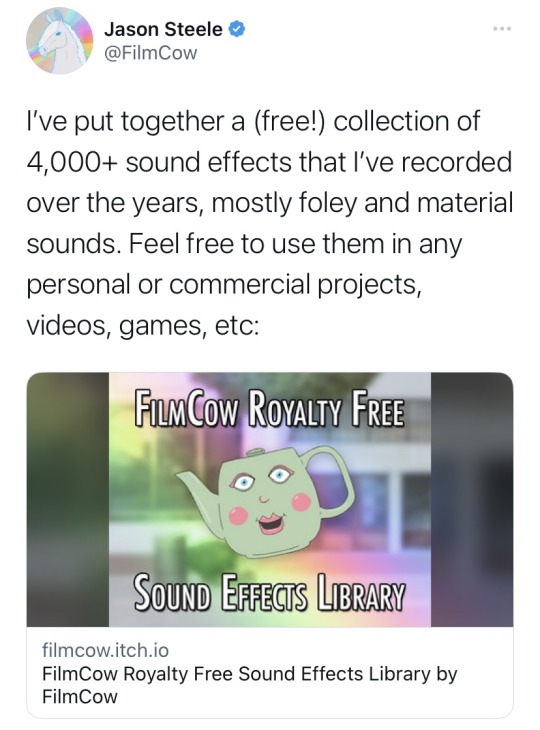
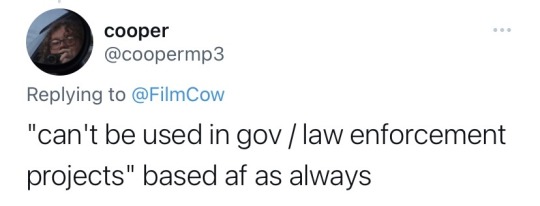
97K notes
·
View notes
Text

"Publishers for Palestine is a global collective of publishers, and others who work in publishing around the world, who stand for justice, freedom of expression, and the power of the written word.
Join us for an international #ReadPalestine week, starting Wednesday, November 29, on the International Day of Solidarity with the Palestinian People. During this week, we encourage people around the world to read fiction and poetry by Palestinian and Palestinian diaspora authors, as well as nonfiction about Palestinian history, politics, arts, culture, and life, as well as books about organizing, resistance, and solidarity for a Free Palestine.
To encourage the spread of #ReadPalestine, signatories of the Publishers for Palestine letter of solidarity have organized a Free Palestine Reading List. Participating publishers are offering one of their e-book titles for free download from November 29 to December 5; all titles are available through this website. There are currently more than thirty books on the list in nine languages, including a half-dozen award winners, with more coming in.
We also encourage readers to post on social media about their favorite Palestine books, to quote from their favorite authors, and to make learning more about Palestine an act of solidarity, using the hashtags #ReadPalestine, #LirelaPalestine, #اقرأ_فلسطين, and more. Participating indie bookstores and libraries are invited to join us by creating Read Palestine displays, social media posts, and other forms of creative solidarity."
#readpalestine#publishers for palestine#palestine#reading list#free resources#mine#ref#ref: mine#the hits
2K notes
·
View notes
Text
I’m seeing a lot of folks reblogging my post about free covid tests talking about being low income, so I wanted to throw out another resource for yall!
Find your local mask bloc! They’ll have free high quality masks, and many also have free tests!
Maskbloc.org has a great list of them including some outside the US!

#covid#covid is airborne#covid isn't over#mask blocs#free covid tests#free resources#mask up#sars cov 2#covid 19
449 notes
·
View notes
Text
Grammar time
This was my mams when she was in school and she gave it to me. It has everything from how to congugate regular verbs and every irregular verb, how to put things into questions, how to reply in the affirmative/the negative, useful question words, prepositions, all of the essentials. It's okay if you don't understand all of it, I didn't at first, but now I love this cheat sheet




#ash’s originals#irish langblr#irish language#ag foghlaim gaeilge#gaeilge#online resource#free resources#language resources
410 notes
·
View notes
Text
DASH ICONS PNG - FREE

Please give this a like and/or reblog if you’re using! Don’t repost / reupload Don't claim it as yours Personal use only
GOOGLE DRIVE
#dash icons template#dash icons#dash icon#free icons#free graphics#free resources#rpc#rph#DASH ICON#rp resources#mabel ; resources#supportcontentcreators#supportcontentcreator#icon#icons#dash rp icons#free dash icon#free dash icons#mabel ; free#random icons#messy icons#carrd resources#png
337 notes
·
View notes
Text



#masks#icon mask#pfp mask#template#pfp masks#icon masks#pk layout#pk template#pluralkit temp#pluralkit template#templates#graphics#free resources
696 notes
·
View notes
Text
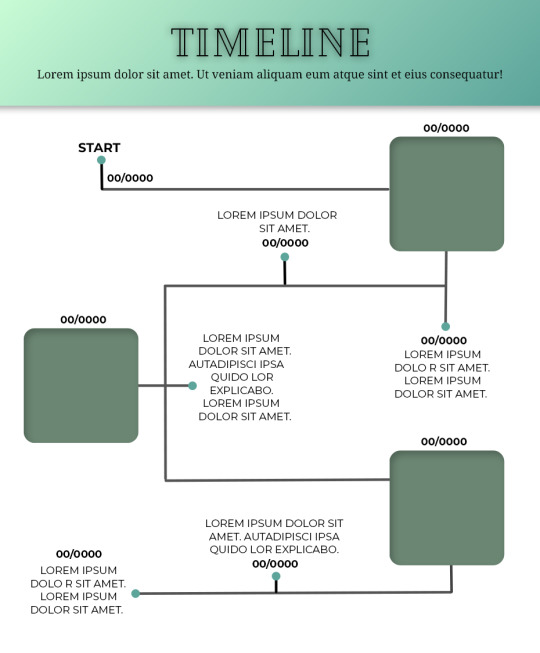
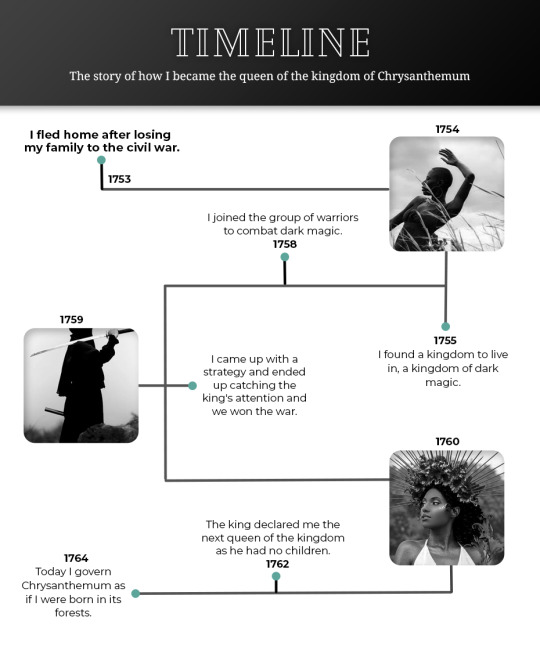
Template #008 by dailyresources
— Timeline Template
Please do not repost / redistribute or claim as your own.
Please, like or reblog if you download.
You may edit as much as you like, it is fully customizable.
This is a free template. PSD File.
Credit is very much appreciated.
Photos by pexels.
Any issues, don’t hesitate to contact me!
Fonts: Cheque, Noto Serif and Montserrat.
Enjoy ❤
Download Link: [mediafire] or [payhip] Support me on [ko-fi]
#templates#timeline template#timeline#free template#psd template#free resources#graphic template#photoshop template#photoshop resources#evansyhelp#dearindies#chaoticresources#allresources#hisources#yeahps#my creations#*mine#*
620 notes
·
View notes
Text




▀ / 𝐓𝐄𝐌𝐏𝐋𝐀𝐓𝐄 𝟎𝟗 ……………............... [ 𝐃𝐔𝐀𝐋𝐈𝐓𝐘 ] 𝘣𝘺 𝐀𝐒𝐌𝐎𝐃𝐄𝐔𝐒 — 𝐅𝐑𝐄𝐄 !
school honestly has me so swamped but i was watching a documentary last night that inspired me to make this template and i'm really happy with how it came out! this template features an optional blog and alias name overlay on two images, with a really simple but muted and contrasted design. hope yall enjoy it and please be sure to like/comment/reblog or favorite on deviantart if you use!
FEATURES:
1 smart psd + my toffee coloring psd
fonts used {edition and angelique ma douce colombe)
4 sample photos (the ones in this post)

DOWNLOAD: DEVIANTART (FREE) or GOOGLE DOCS (NO ZIP) x VIEW MORE TEMPLATES
#rpc#rph#rpt#dearindies#supportcontentcreators#free rp resources#character template#indie rp#rp resources#free resources#free psd#templates.#mine.psd#mine: ch temp.
461 notes
·
View notes
Text
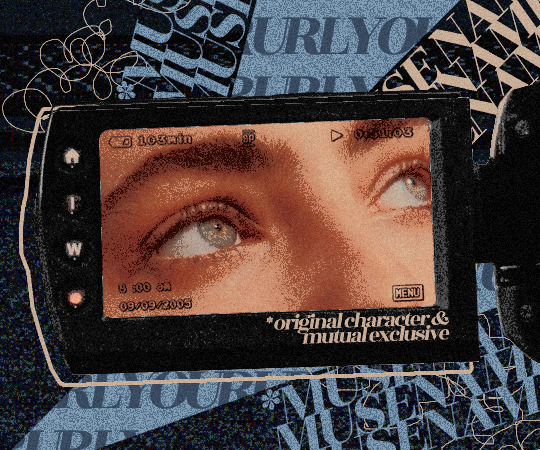
Another one for your camera-needs! Change and twist as you like, just don't claim as yours or profit from it! No credits needed, but highly appreciated!
👻 ⸻ CAMERA GIRL
#muse template#fakevzresources#free resources#roleplay resources#roleplay template#roleplay psd#muse resources#muse promo#muse psd#template psd
337 notes
·
View notes
Note
Do you still have the "SFW interaction only" banners you made on your old account? I was looking for them but couldn't find any :[ -✨🎉 (if not taken :])
YEA ! i have all three !! wags tail



#。truly beloved#。chocoperrito#resources#f2u graphics#banners#free to use#web graphics#free resources#sfw agere#sfw petre#pet regression#age regression#agere#petre#✨🎉
404 notes
·
View notes
Text
Language resources
(Duolingo alternatives)
For those who no longer use or trust Duolingo, I've put together a list of resources - apps, learning methods, programmes, etc - with a list of whether or not they are free, and my personal experience with their success at teaching a language. I have also included new ones that I haven't tried yet but which I have researched; for these, I have included a rating of how much hope I have for them panning out in the future.
[I grew up bilingual & went to a multicultural school that had a student body consisting of children from refugee families who spoke little to no English. The school prioritised teaching the entire student body the minority languages, and finding a bridge language we could all learn together to fill in any gaps in communication. Due to this, I spent the last 4 years of primary school learning new languages with the rest of the student body.
We would have a school-wide lesson for 1 hour once a week - usually with a child or staff member fluent in that language leading the lesson at the front of the gym with a microphone so we could hear the correct pronunciation in time with reading the native spelling & English phonetics on the projector screen at the front of the hall. We were expected to use this language in the corridors when we spoke with teachers or staff members and when we passed by other students regardless of what their or our native languages were. As far as fluency went, we were expected to be able to recognise and say greetings and goodbyes, enquire to each others well-being, know how to ask for assistance, how to ask for medical help for various things, how to ask where the bathroom was, to give and receive directions around the entire school, as well as colours, names of things found around the school, make small talk about our activities of the day and our family, and why we were out of class - all with relative ease & mutual understanding.
We changed language after every break, so it was roughly 8 hours of lessons in each language, before we would start again with a new one.
Alongside this, the older students in the school (final 3 years, aged 9 - 11/12) would learn French 3+ hours a week for those 3 years so their writing, reading and speaking standards were acceptable for the beginning of high school. In 1 of these years, we also studied both of our native languages for the first time, for 6 weeks each.
I left traditional schooling at 11, and while I was home-schooled I taught myself Italian, Russian, and Latin from scratch, along with relearning my preferred native language, and 2 forms of sign - I used Makaton as a young child and in school as I have a form of mutism, but as a teen I realised I associated this language with the severe trauma I experienced at school, and so suffered from flashbacks and dissociative episodes when I used it. This, along with medical concerns, led to me learning BSL, and then SSE. Today, I use a combination of English, SSE and my native language in everyday settings. I have a mental block for learning French due to it being heavily associated with my trauma.
I am saying all this not for sympathy, but so that you can see firstly how much I enjoy and value learning languages, and in order to show my experience levels with learning languages. I've used, tried, and tested all of the learning methods I will be talking about in this post. I have either used or done a lot of research into the apps and programmes discussed in this post.
And yes, I have prioritised ones that teach endangered languages, indigenous languages and languages that aren't often included in language media such as Hebrew, various forms of Arabic, Navajo, Gaelic, and others. I have also included ones that teach and / or document sign languages and sign communication systems.]
Please note that the following lists are arranged in no particular order. They are not ranked best to worst or by any other X to Y ratio. They are simply ranked according to how I remembered, tested, or found each of them.
Apps
1: Fluyo.
Rating for hope / faith: ☆☆☆☆☆
Languages available: ☆☆☆
Effectiveness: n/a
Cost: unknown
Status: not yet publicly available
Please note that while Fluyo is not yet available, its Kickstarter page is flourishing, its app is in development, and the developer is a man of colour who has continued to devote himself to this app and its development despite rising health concerns, developing a life-changing disabling condition, and numerous set-backs. His YouTube channel is very educational, and he has also written a book on language-learning. If you would like to know more, you can learn about him here. Fluyo is set up like a computer game with multiple cute characters who are interactive rather than stationary, and I genuinely have high hopes for it once it is released.
2: Babble
Personal experience: ☆☆☆
Languages available: ☆☆
Effectiveness: ☆☆☆☆
Cost: free trial for the first lesson, but a paid subscription is required for any further lessons
Status: available to download
3: Language Drops
Personal experience: ☆☆
Languages available: ☆☆☆☆☆
Effectiveness: ☆☆☆
Cost: free for some lessons, but a paid account is required for access to all lessons
Status: available to download
4: Fluent forever
Hope for: ☆☆☆☆
Languages available: ☆☆☆☆
Effectiveness: ☆☆☆☆☆
Cost: free access to basic lessons to build your confidence with the language, but a paid subscription is required for unlimited access
Status: available to download
5: Lingopie
Hope for: ☆☆☆☆☆
Languages available: ☆☆
Effectiveness: ☆☆☆☆☆
Cost: free trial for 7 days, but a paid subscription is required after that for continued use of the app
Status: available to download
6: Fluenday
Hope for: ☆☆☆
Languages available: ☆☆
Effectiveness: ☆☆☆☆
Cost: free
Status: available to download
7: Language flower
Hope for: ☆
Languages available: ☆
Effectiveness: ☆☆
Cost: free, as far as I can tell
Status: available to download
8: Sign BSL / Daniel Mitchell
Personal experience: ☆☆☆☆
Languages available: ☆☆☆☆☆
Effectiveness: ☆☆☆☆
Cost: free
Status: available to download
Please note that Daniel Mitchel offers a BSL version of this, along with an ASL version.
9: Bright BSL / sign lab
Personal experience: ☆☆☆
Languages available: ☆☆☆☆☆
Effectiveness:☆☆☆☆
Cost: free for some lessons + premium for all other lessons
Status: available to download
Please note that Sign Lab offers this app for the following sign languages: BSL (Bright BSL), ASL (ASL Bloom), LSF (Pause LSF / Langue des Signes, yoDGS, Libras (LibrasLab), Italian Sign Language (MeLISegno), and Toleio: Norsk Tegnspråk.
10: BSL zone
Personal experience: ☆☆☆☆☆
Languages available: ☆☆☆
Effectiveness: ☆☆☆☆
Cost: free
Status: available to download
11: Reverso context
Personal experience: ☆☆☆
Languages available: ☆☆☆☆☆
Effectiveness: ☆☆☆☆
Cost: free
Status: available to download
This is less for learning a language, more for quick reference / fact-checking a translation.
12: Pimsleur
Personal experience: ☆☆☆☆
Languages available: ☆☆☆☆☆
Effectiveness: ☆☆☆☆
Cost: free 7 day trial, but a paid subscription is required for continued use
Status: available to download
13: Memrise
Personal experience: ☆☆☆
Languages available: ☆☆
Effectiveness: ☆☆☆☆
Cost: free for introductory levels, with a premium option to unlock majority of lessons
Status: available to download
14: Busluu
Personal experience: ☆☆☆☆☆
Effectiveness: ☆☆☆☆☆
Cost: Free, with a premium option to download lessons, more repetition, and extra lessons
Status: available to download
15: Hello Talk
Hope for: ☆☆☆
Languages available: ☆☆☆
Effectiveness: ☆☆☆
Cost: free
Status: available to download
16: Rosetta Stone
Personal experience: ☆☆☆☆
Languages available: ☆☆☆☆
Effectiveness: ☆☆☆☆☆
Cost: monthly subscription is required
Status: available to download
17: Lingo Deer
Personal experience: ☆
Languages available: ☆☆
Effectiveness: ☆☆☆☆
Cost: free, with a premium option for all lessons beyond Basics 1
Status: available to download
18: Beelinguapp
Personal experience: ☆☆☆☆☆
Languages available: ☆☆☆
Effectiveness: ☆☆☆☆☆
Cost: free trial, but a subscription is required for total access
Status: available to download
19: Lingvist
Personal experience: ☆
Languages available: ☆☆☆ (though it does have an option to suggest other languages for them to add, and which language you would like to learn from, and they'll email you when / if that language becomes available)
Effectiveness: unknown
Cost: free
Status: available to download
[Please note this one is not photosensitive friendly or seizure friendly. I had to close the app as soon as I opened it due to the design on their opening page, and even when I reopened it and clicked straight through, their colour scheme was still upsetting to my senses.]
20: Lingvano
Hope for: ☆☆☆☆☆
Languages available: ☆☆☆☆
Effectiveness: ☆☆☆☆
Cost: free for a few lessons, but for access to all lessons, a paid subscription is required
Status: available to download
21: Duocards
Personal experience: ☆☆☆
Languages available: ☆☆☆☆
Effectiveness: ☆☆☆☆
Cost: free, but a more advanced version is available for premium accounts
Status: available to download
22: Chatterbug
Hope for: ☆☆☆☆☆
Languages available: ☆
Effectiveness: ☆☆☆☆
Cost: free with limited access, but a paid version is available
Status: available to download
23: Mango languages learning
Hope for: ☆☆☆☆☆
Languages available: ☆☆☆☆☆
Effectiveness: ☆☆☆☆
Cost: free trial, with a premium account required for further access
Status: available to download
24: EdX
Hope for: ☆☆☆☆
Languages available: ☆
Effectiveness: ☆☆☆☆
Cost:
Status: available to download
Please note that EdX is an app which houses courses on multiple subjects, not specifically a language-learning app.
25: Mondly Languages
Personal experience: ☆☆☆
Languages available: ☆☆☆☆
Effectiveness: ☆☆☆
Cost: free, though it does repeatedly offer you a subscription account for an experience catered to you and your interests
Status: available to download
Please note this one may be triggering to those who are photosensitive or whose senses are upset by rapid moving gifs. There is a crown in the top right-hand corner which vibrates very quickly.
26: Speakly
Hope for: ☆☆☆☆
Languages available: ☆☆☆
Effectiveness: ☆☆☆☆
Cost: free trial, with a subscription account required for further use
Status: available to download
27: Pocket sign
Hope for: ☆☆☆
Languages available: ☆☆
Effectiveness: ☆☆☆☆
Cost: free, as far as I can tell
Status: available to download
28: Lingo legend language learning
Hope for: ☆☆☆☆☆
Languages available: ☆☆
Effectiveness: ☆☆☆☆
Cost: free, though I think there may be a premium option either available but unmentioned, or in the works
Status: available to download
Please note that this app offers you the chance to vote for which languages should be added to its interface, so they can prioritise which ones to fund.
29: INC sign language app
Hope for: ☆☆
Languages available: ☆☆
Effectiveness: ☆☆☆☆
Cost: free
Status: available to download
For those with religious trauma, please note that INC stands for Iglesia Ni Cristo, and the INC Sign Language App "is a project of the Christian Society for the Deaf under the Christian Family Organizations Office of the Iglesia Ni Cristo (Church Of Christ)". While it does not appear to prioritise religious content, the content does feature people dressed in suits as if for attending a church sermon.
30: My signing time
Hope for: ☆☆☆☆
Languages available: ☆☆
Effectiveness: ☆☆☆☆☆
Cost: 14 day free trial, and a subscription is required after this point
Status: available to download
Please note that this one is aimed at babies / toddlers & families.
32: Falou
Personal experience: ☆☆☆☆
Languages available: ☆☆☆
Effectiveness: ☆☆☆☆
Cost: free, with a premium option if you want to learn more than 1 language & unlock additional courses in your chosen language
Status: available to download
33: Earworms
Personal experience: ☆☆☆☆☆
Languages available: ☆☆☆
Effectiveness: ☆☆☆☆☆
Cost: free for the demo, then after that, the lessons are broken into two "volumes" to buy individually, or 1 bonus-pack which contains both to buy once at a slightly reduced cost.
Status: available to download
Please note that Earworms used to be available as CD lessons, which is when I first used them. The CDs were in Volumes and were more expensive than all costs on this app. I used them 10 years ago and still remember what I learned despite not getting to use the language very often, so I can guarantee their method is very effective.
34: Qlango
Personal experience: ☆☆☆☆☆
Languages available: ☆☆☆
Effectiveness: ☆☆☆☆☆
Cost: free, with a premium option for the final 3 levels
Status: available to download
Please note that this one is laid out more like a semi-immersive lesson plan rather than a game. However, it is currently my favourite one.
Other resources
1: Signing hands (YouTube)
Personal experience: ☆☆☆☆
Languages available: ☆☆
Effectiveness: ☆☆☆
Cost: free
Status: available to watch
2: Military style
Personal experience: ☆☆☆☆
Languages available: ☆☆☆☆☆
Effectiveness: ☆☆☆☆☆
Cost: n/a
Status: available to begin for free, though it will be difficult for you to find an environment that allows you to experience this authentically. If you would like to learn more about what the military style is, I will speak about it further below.
3: Textbooks / Reading materials
Personal experience: ☆☆☆☆
Languages available: ☆☆☆☆☆
Effectiveness: ☆☆☆☆
Cost: free, or otherwise up to you (what you are willing / able to spend on it)
Status: available to start whenever you feel like it
You can find numerous language-learning resources listed at the end of this post. I also recommend buying an up-to-date dictionary and thesaurus in your chosen language, and studying it. Study the grammar noted in the front, and then actually read the dictionary. It will seem strange, but it will benefit you in the long-run. Make notes as you go, highlight and colour some things in as you see fit.
Learning methods
1: Immersion
Over and over again, we are told that immersion is the best, most effective way to learn a language. This is because this is how we often think children learn languages - and we're partly right about that.
Immersion is the process of immersing yourself in the chosen language, with one single choice: learn the language, or suffer.
If our brains have to choose between struggling to pronounce a few words while gesturing to something we want and clinging onto sounds we hear like trying to hold onto a wet otter, or not getting what we want, we're going to choose to sound & look like an idiot, pointing and saying basic sounds, even if trying to remember the reply is like trying to remember Pi.
With enough time, though, we pick the language up remarkably well when we have no choice but to pick it up. This is the method which has us mimicking accents and gestures and expressions in order to best gain what we want: to express ourselves, our needs and our desires.
However, immersion is often critiqued because unless you have the means to fly to the country that speaks your desired language and live there with 0 influence from your native language for 6+ months... Well, you're not fully immersed, are you? Language apps try to give you an immersive experience, but you can always put your phone down. Depending on where you were educated, you may have had an immersive language class, where you had to learn the language or not be able to join in and so failed by default.
Good ways to mimic immersion are: finding radio channels in your chosen language and watching TV shows in your chosen language without subtitles, and listening to music in your chosen language.
2: Flashcards
Flashcards often tend to be a popular way to test your memory and retention of a particular subject. However, using them to begin learning a language can lead to a loss of motivation.
If you are creating the flashcards yourself, I would recommend creating them in 2 sets: 1 which is the traditional flashcard (your first language OR a picture on one side, and the translation on the other side), and 1 which has twice as many, with only 1 side being used. This second set should be designed like playing cards - the word or picture on one side, and a plain back.
This second set can be used when you're wanting to boost your motivation or confidence - arrange the cards face down, and begin playing the children's game of Pairs. Another option would be Snap.
When you return to using the traditional flashcards, you'll have a better foundation to build on if you've taught yourself to see these as fun, and taught your brain to associate these cards with quickfire responses - such as are brought to the surface during childrens' cards games.
3: Stickers
This is a method which seems obvious once it's pointed out, but seems confusing if you've never done it before.
Simply put, using stickers is when you create or buy stickers with the translation of everyday objects, words and phrases in your chosen language, and put them up around your house. "Door" goes on the door. "Cupboard" goes on the outside of a cupboard, "bread" goes on the inside. "Fridge" goes on the fridge door. "Milk" goes behind the milk so you see it every time you pick the milk up. "Lightswitch" goes above / under the lightswitch. Etc etc etc.
This is a memory retention technique used for multiple scenarios. Nurseries and schools may sometimes have the Makaton sign for something shown in a large diagram stuck to the walls / surfaces. Carehomes may have the names & purposes of objects stuck to the surfaces / objects in the dominant language, for the residents with memory issues or communication barriers.
While this is a good technique for quickfire memory boosts, it can be a slow way to learn a language from scraps, and is better suited for when you are semi-familiar with the written form of the language you are learning. It is also a good way to get everyone involved, as everyone in the home will be interacting with the stickers.
4: Forced conversation
This one is controversial, but can be very effective if it is approached with an open mind, clear communication and previously-agreed upon rules and lines.
The method of forced conversation is exactly what it sounds like: it is when you are engaged in a conversation in your target language, in which the person whom you are conversing with refuses to speak your original language. However, no matter how poor your language skills are, or how uncomfortable you get, they do not stop the conversation, and you do not let to leave the situation until they are satisfied you have communicated well enough, and have understood them. This will usually be "proven" by them giving you instructions, asking a specific question, or requesting you do something for them - if you follow the action through, you have understood them, if you try to give a vague answer and do not do the task, you have not understood them, and the interaction is forced to continue. Again.
This method is controversial because it is not immediately inclusive or welcoming for those who are shy, have anxiety, any form of Mutism, or who have a neurodiversiry or learning disability which impacts their communication. In formal situations, it is often these people who fall behind or get put off from learning a language if forced conversations are the only method they have the option of.
However, if there are adaptions made and accommodation previously discussed and provided, this can still be a viable method which is inclusive to all.
If the person speaking your target language is previously informed of your communication issues or complications, and are instructed in how to accommodate you (ie: Do they need to point at something, or use picture cards as prompts? Do you prefer using picture cards? Do you get distracted if they use hand gestures? Do you need fidget toys provided? Will it be easier for you if you are not forced to maintain eye contact? Will it be better for you if one or both of you are moving around rather than sitting down directly across from each other? Do the lights need to be altered in your environment to make the sensory experience less overwhelming? Do you use noise cancelling headphones? Do you focus better if there is music on in the background? Are there certain tones of voice or volume levels that need to be avoided? Does constantly changing body language stress you out? Do you have a stutter or speech impediment that may impact your pronunciation? Etc.)
Accomodaring these issues, and coming up with a signal to take a break (ie, if you have issues telling the difference between "I am angry at you personally" and "I am tired today" in vocal tones and facial expressions, will you get upset if you think the person is angry at you for not knowing their language? If so, do you need a signal to take a break so you can clearly communicate your stress, and they can give you an answer in your original language and clarify anything which is upsetting or confusing you, before continuing the conversation in your target language?) or to speak in simpler terms? Is their one subject you can talk about particularly well (a hyperfixation) which they can use in the conversation to help you engage?
All of these accommodations may seem intimidating, but if all those involved are aware of these accommodations going into the conversation, it can make the interaction much more positive and productive.
Forced conversation uses the same logic as immersion: if your brain has to choose between looking / sounding like an idiot who stumbles over words, or a very uncomfortable situation which lasts longer each time you make a mistake, your brain will choose to look like an idiot in order to achieve what it wants.
5: Repetition
Repetition is a very common method of learning a language, though it is often criticised for being ineffective.
It is when a phrase or word is said by one party, and repeated by another. If the second party does not pronounce it correctly, the first party repeats it again. This continues until the second party gets it correct. Then the pattern is repeated with another phrase / word. Once a certain number of words have been said correctly by the second party, the first party will return to the start and repeat the process again, with the second party having to say the phrases / words correctly multiple times before being able to move onto the next. The entire process continues in this loop until the second party is saying things correctly with ease.
This method is part of what makes up both immersion, flashcards and military style methods for language learning. It can also be used with textbook learning.
However, it is often critiqued because once the second party is away from the first party and left to their own devices, their confidence in their previous pronunciation will falter, and when they return to the lesson or need to use the language again, they'll be at a lower level of achievement than they were when they left. It is also very tedious, and can become boring.
6: Music
When I spoke about immersion, I briefly mentioned music. I also said that we assume children learn language via immersion. However, as adults we often overlook something else which plays a crucial role in teaching children language: music.
Children learn language, rhythm, speech patterns, and turn-of-phrase via songs, rhymes, riddles, fables, tongue-twisters, and music.
This is why it can be priceless to learn songs in your chosen language. Lullabies. Nursery rhymes. Children's songs. Pop songs that are ridiculed as being too simple or written without talent. Theme tunes from children's shows. Traditional rhymes and tongue-twisters. Most of these can be found via a long time on YouTube.
Music works in a unique way, worming its way into our minds. Our brains are hardwired to recognise and remember patterns - and music is made up of patterns. This is why we get songs stuck in our heads for no reason. Being able to use this to your advantage to learn or remember a new language can be an amazing experience.
7: Subtitles and language swap
This is a method which can be useful when you are learning more than one language, but are more familiar with one than the other.
It is where you watch / listen to a certain media in 1 language, while reading the subtitles / lyrics in another language. This way, the language you are more familiar with / fluent in will fill the gaps of understanding the less familiar one.
You can then challenge yourself by removing one language (muting the media & only reading the subtitles, or removing the subtitles and only listening to the provided audio) and seeing how well you follow along / understand.
This can also be used with your target language and your original language.
8: Writing it down
This is another form of repetitive learning which can be useful when studying / retaining for an exam, but can also be useful when you are first learning the written-to-verbal patterns of a language.
One method is longterm recall: this is where you write down short notes, words & phrases in your target language 1+ hour after engaging with your learning resources. This tests how much you retained. It is a physical show of how much you have actually learned.
Another method is short term recall & build-up: this is where you choose a single word / phrase, and write it as lines (Ducks are green and brown. Ducks are green and brown. Ducks are green and brown. Ducks are-) until your page is full. Then go back to the start and write over the top of your own writing, staying as close to your original marks as possible. Repeating this pattern multiple times until your page rips or the words become close to unreadable tricks your brain into focusing morenon your handwriting than on the language - as such, you will start to see the phrase / word as a pattern to follow, and it is then left to your subconscious mind to retain it while your conscious mind prioritises hand-eye coordination and fine motor skills.
9: Textbook
If you're more academically inclined, you may prefer a textbook method of study. This is the style used in most night classes and / or some traditional education classes.
Textbook methods have everything arranged by date and time, and learning goals are broken down & laid out according to a set calender: by x, you will have learned this amount, by y, you will have learned this amount, so on so forty until the final set date when you will be "fluent" or a certain level of reasonably fluent.
Most of the time with this method, you will be following guidelines, activities and lesson plans previously arranged in a chosen textbook, and that textbook will be your sole or primary resource.
10: Bilingual books (page by page)
Using page-by-page bilingual books can be confusing and is often overlooked in regards to adult education - however, it can be somewhat interesting to try.
On one page, the text will be written in your original language - on the opposite page, the same text will be repeated in your target language. Seeing the two side-by-side allows you to read your target language and instantly refer back to your original language if you get stuck on a word or phrase.
There is another form of bilingual books often given to children: line-by-line. These feature the image / picture, with the original text written clearly and simply, usually no more than 1 or 2 sentences per page. Directly underneath them will be the translated text written in a different font.
11: Same story / movie, different language
While this can be a fun method, it isn't always the most beneficial if you're looking for accuracy - however, it can be useful if you're wanting to test yourself.
It uses a similar logic to the subtitles & language swap method: you put on a movie you are familiar with, but you put it on in your target language with 0 subtitles. This allows you to engage with the language while using the familiar movie / story as a bridge.
12: Military Style
This is perhaps the most effective technique to use of you have a set amount of time to reach a specified level of understanding / fluency in a language. However, it is also one of the most difficult to fully replicate yourself.
Military style is a form of forced immersion combined with forced conversation and repetitive loops, but with reward and punishment techniques to make you prioritise learning the language over your own comfort zone / personal boundaries.
An example of this style would be party 1 having party 2 engage in forced conversation in front of an audience, then having them repeat a phrase they got wrong over and over until they get it right - all in front of the audience, with a rule set which forbids party 2 from sitting down or disengaging the interaction until they have finished the task. Nobody in the audience is allowed to help party 2. Party 1 continues to push party 2 outside of their comfort zone by having them continue the conversation, repeating any mistakes until they are corrected, and the conversation does not end until it is completed.
After that, party 2 has to do 100 push-ups while repeating the phrase they got wrong the most - and they have to pronounce it correctly while doing the push-ups. Any mistakes, and they go back to 1, regardless of if they were at 7 or 98.
This combined punishment of mild public humiliation and physically pushing their body beyond its limits makes the brain see learning the language as the solution to ending this treatment - as such, party 2 will be far less likely to repeat those mistakes again.
Alongside this, there is forced immersion, in the sense that nobody is allowed to speak their original language in any context or to anyone - they must use the target language or be ignored at best or ridiculed at worst.
Understandably, this method is difficult to replicate on your own or outside of the army.
However, there are some tokens which can be taken from it: notably forced repetition & physical exercise.
Set yourself a challenge using any of the previously mentioned learning methods or apps. Keep note of your mistakes.
At the end of the challenge (say 30 minutes of learning) count up all your mistakes. Now do a push-up / squat / pull-up / sit-up / etc for each mistake you made while repeating the phrase out loud. If you stall too long on making a connection in your mind or stumble over the sounds, start counting from 1 again. Repeat this until you're continuously getting the mistakes correct.
At the end, go back to your lesson and repeat it. Did you get less mistakes?
Thoughts & considerations when it comes to learning a language - for language savants and novices alike
"If you don't use it, you lose it" is probably one of the most hated phrases in terms of learning anything new - and especially in terms of learning a language. I think a better expression would be "If you don't make room for it, you won't keep it".
If you don't make time to learn a language, you won't learn it.
If you don't challenge yourself to reach a certain standard, you won't achieve any standard.
If you don't make the effort to retain the new information, you'll forget it.
When you learn a new language, you have to make room for it in your mind. You have to be willing to make mistakes and continue, knowing you're not doing it perfectly. You have to be willing to make it a priority, even if nobody else in your life sees it as one. You have to be willing to be frustrated and tired and bored. You have to be willing to get every single thing wrong and try again. You have to be willing to be uncomfortable with the new sounds you're making and you have to be willing to be patient while your brain digs out a new burrow of tunnels and connections which didn't previously exist.
If you genuinely want to learn a new language, you have to make room for it in your mind and life. Even when sometimes it's a tight fit.
Resources, as promised
Reading, writing & textbook materials:
Book 1
Book 2
Book 3
Book 4
Book 5
Structured notebook 1
Structured notebook 2
Structured notebook 3
Something worth checking out 1
Other things to invest in:
A dictionary in your target language
Picture cards
Flashcards
Stickers
Books in your target language
Children's books in your target language
Nursery rhyme books in your target language
Magazine subscriptions in your target language on a topic you find fascinating
Newspapers in your target language
Poetry in your target language
1 paid language learning app - a lot of the time, you get what you pay for. Not always, but usually.
Notebooks, stationary, etc
Headphones / earplugs
Media in your target language
#languages#langblr#language#linguistics#learning#learn languages#education#educate yourself#educate yourselves#educación#educação#free education#free resources#resources#duolingo#savant
621 notes
·
View notes
Text
YouTube Channels for Kids by JLPT Levels
(。•̀ᴗ-)✧ resources

こんにちは, Japanese learners! Learning a language is an exciting adventure, isn't it? To add a spark of joy to your Japanese learning journey, here's a collection of YouTube channels tailored for kids. Organized by JLPT levels, these channels offer a blend of education and entertainment for learners at different stages. Keep in mind, though, that JLPT levels aren't an exact science like math – language learning can be subjective in terms of difficulty. However, these resources provide a fantastic starting point and a fun way to explore the world of Japanese language and culture. Let's hop into this delightful world of animated learning and playful discoveries!
Friendly reminder to adjust your way of learning in order to make the most of what you're studying to reach the goal you truly want! read my post about it (ᵔ◡ᵔ)
꒰ა ˚₊ ✧・┈・╴N 5 ╴・┈・𐑺 ‧₊˚໒꒱
— Curious George (N5 level)
— Japanese folk tales/anime series (Japanese audio/Japanese subtitles) from BomBom Academy (N5 level)
— Peppa Pig (N5-4 level)
— Anpanman (N5-4 level)
— NHK education (N5-4 level)
꒰ა ˚₊ ✧・┈・╴N4 ╴・┈・𐑺 ‧₊˚໒꒱
— Cinnamon Roll, Sanrio (N4 level)
— [Anime] Atashin'chi (N4-3 level)
꒰ა ˚₊ ✧・┈・╴N3 ╴・┈・𐑺 ‧₊˚໒꒱
— Sesame Street Japan (N3 level)
— Chibi Maruko Chan (N3-2 level)
꒰ა ˚₊ ✧・┈・╴N2 ╴・┈・𐑺 ‧₊˚໒꒱
— Precure (N2 level)
またね~@inkichan
꒰ა ˚₊ ✧・┈・╴﹕꒰ ᐢ。- ༝ -。ᐢ ꒱﹕╴・┈・𐑺 ‧₊˚໒꒱
#japanese#nihongo#studyblr#learn Japanese#learning Japanese#japanese langblr#langblog#japanese studyblr#日本語#study japanese#japanese resources#free resources#resources#japanese free resources#youtube#JLPT#JLPT N5
607 notes
·
View notes
Text

— RANDOM, png pack 31
ENG.RULES: a. add to favorites and comment (please be kind) if you download; b. please contact us in case of errors/failures in the download; c. don't including in other packs or transfers. PT.REGRAS: a. adicione aos favoritos e comente (seja gentil) se baixar; b. entre em contato no caso de erros/falhas no download; c. não inclua em outros packs ou repasse — download ↺
#coloursource#psd#psds#free resources#resources#psd coloring#moodboard#aesthetic#photoshop resources#icons#aesthethic#collage#dark#capa de fanfic#capa de fic
243 notes
·
View notes
Text



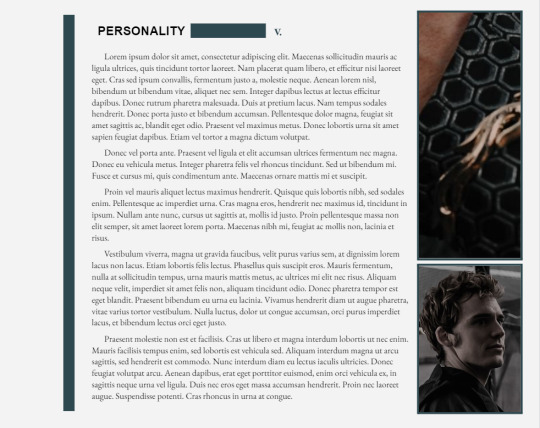
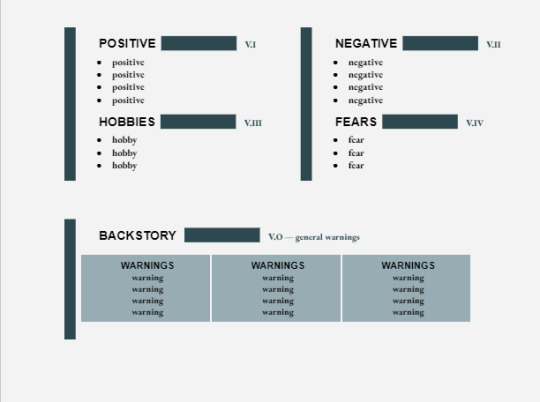
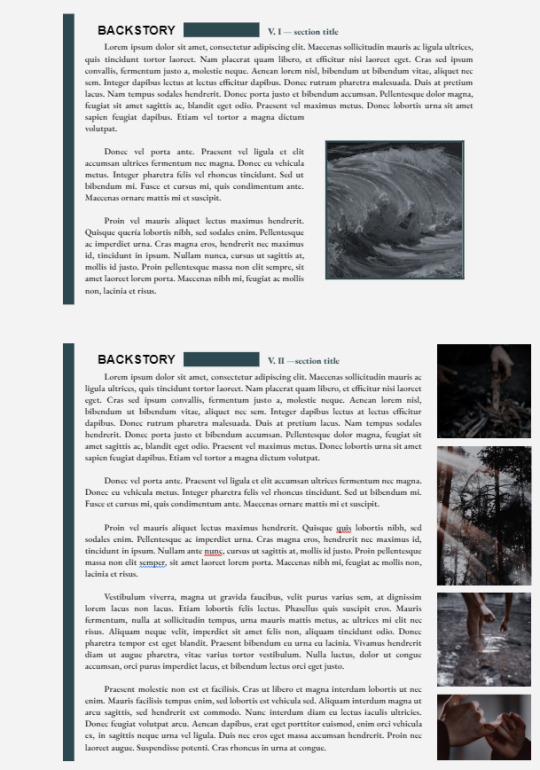
0.1 ━━━━ history is written by the victors.
i've decided to start posting on tumblr, so this is a new beggining! i've had this doc idea for a while, and i'd like for it to be an indicative of what i can do. ❝ history is written by the victors ❞ is a text-heavy, single-muse google doc, that has a variety of links & a few images. it's very obviously centered around finnick odair, and I hope that the doc has managed to capture at least some of his essence.
about the use go to file, then select make a copy. do not remove the credit, please. turn off the ability to make a copy before using it. like & reblog this post if you are going to use it.
likes & reblogs are appreciated!
access the document · ━━ ˊ * 𝐇𝐈𝐒𝐓𝐎𝐑𝐘...
#*ㅤㅤlostdurast : ㅤㅤgdocs.#google docs template#google docs#rp resources#rp template#character template#rp docs template#character sheet#oc template#roleplay template#muse template#template#free resources#discord template#discord rp template#gdocs template
2K notes
·
View notes
Text

› 𝗡𝗘𝗪 ( ⋆ ) .ᐟ 𓂃 here you will find 3 different ( free ) tumblr icon templates. they're ready to be used and all you need to know is how to work with clipping masks. i don't own any of the base images so the credit goes to its right owners.
219 notes
·
View notes